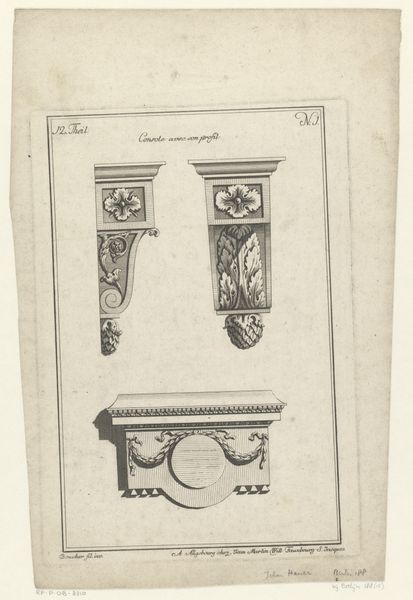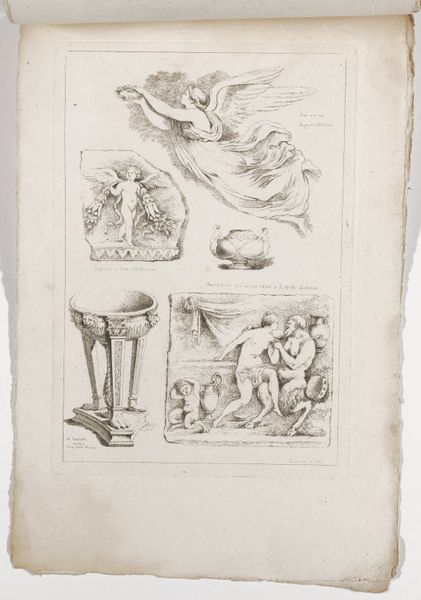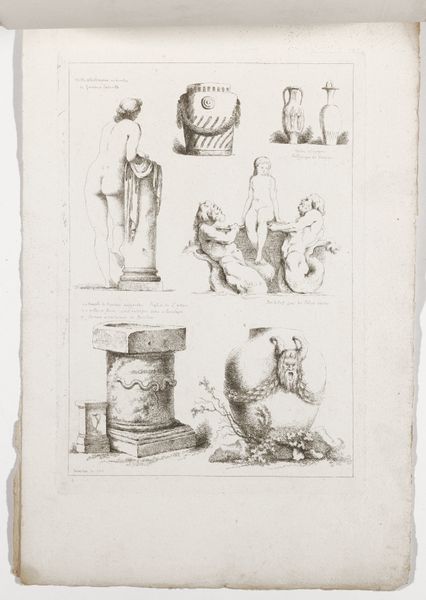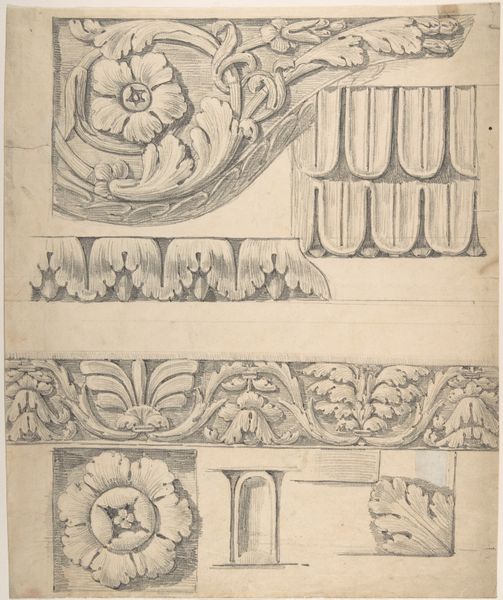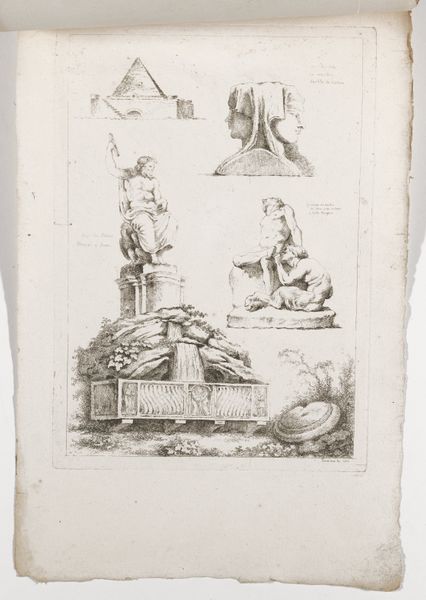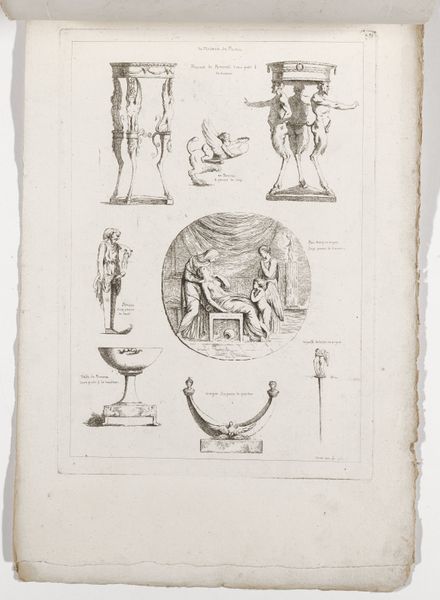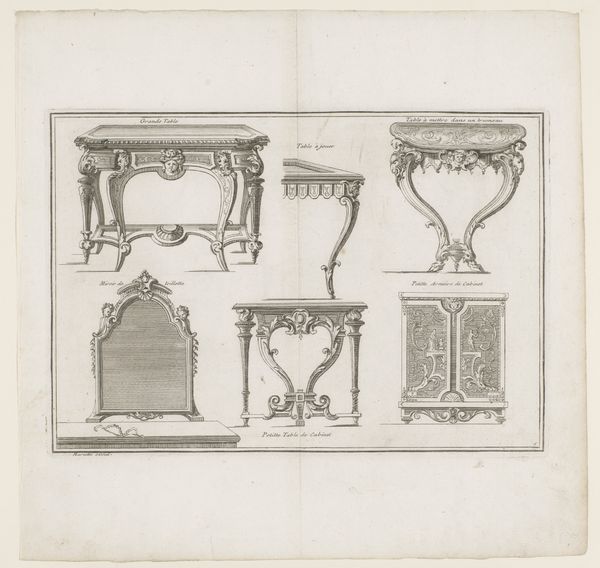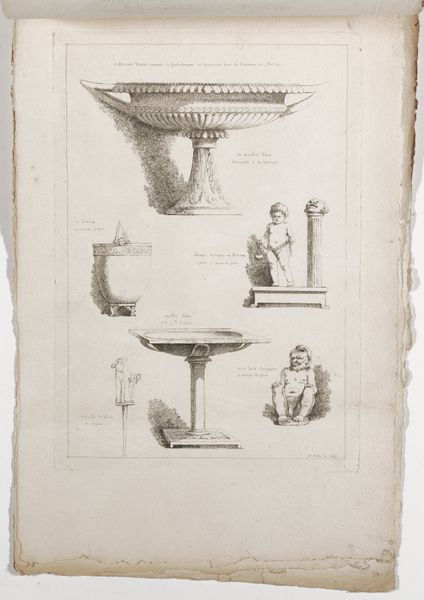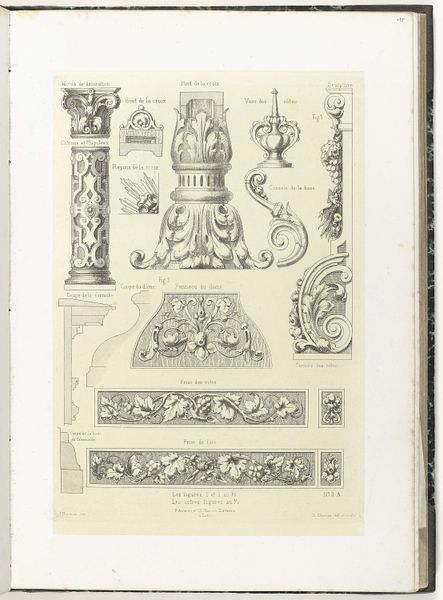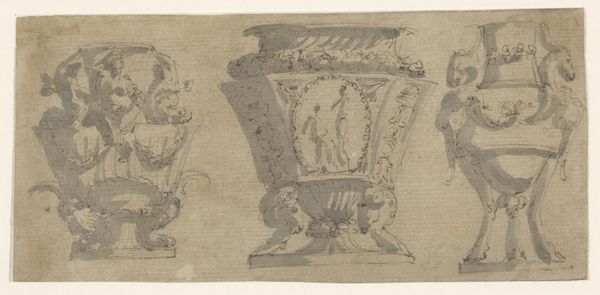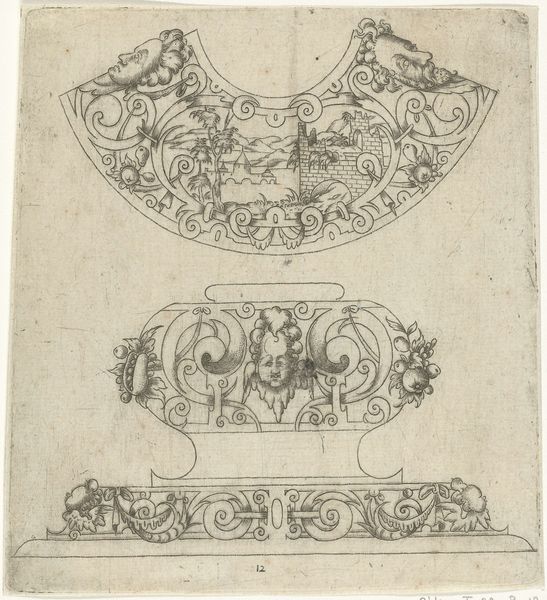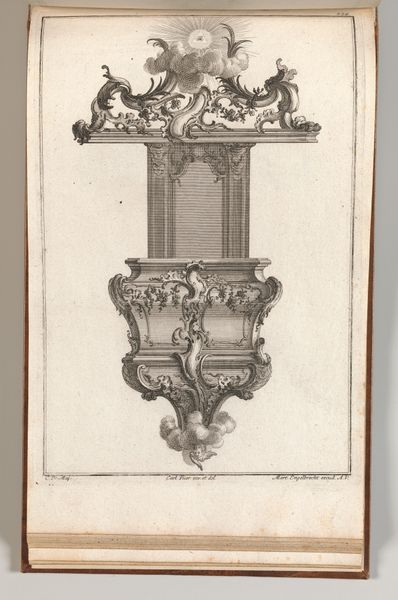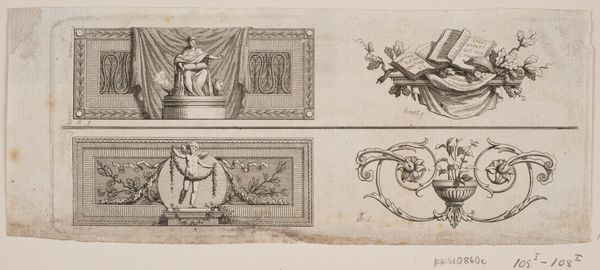
drawing, print, etching, paper, engraving
#
drawing
# print
#
etching
#
etching
#
paper
#
personal sketchbook
#
geometric
#
ancient-mediterranean
#
history-painting
#
engraving
Dimensions: 12 3/4 × 8 15/16 in. (32.39 × 22.7 cm) (plate)16 7/8 × 11 1/4 in. (42.86 × 28.58 cm) (sheet)
Copyright: Public Domain
This is Fascicule III, a print by Jean Claude Richard, Abbé de Saint-Non, made sometime in the 18th century. Here, the recurring motif of paired animals—lions and griffins—strikes a chord deep within our collective memory. Consider the ancient Near East, where guardian figures flanked palace entrances, their purpose to protect sacred spaces. Notice how the lions and griffins face each other symmetrically, evoking balance and guardianship. The image resonates with earlier depictions, such as the lions at Mycenae’s Lion Gate, or even the Ishtar Gate of Babylon. These images are more than mere decoration; they are potent symbols, charged with the energy of protection and power. This impulse to ward off evil and invite prosperity has evolved through centuries. It manifests in the gargoyles perched on Gothic cathedrals and the fierce dogs guarding temples in Asia. The enduring appeal of these symbols lies in their capacity to tap into our deepest fears and desires. They stir something primal within us, reminding us of the timeless human need for security. Such images echo through history, continuously transformed yet eternally resonant.
Comments
minneapolisinstituteofart about 2 years ago
⋮
The Jean-Baptiste Claude Richard (also known by his title abbé Saint-Non) embodied the important role of the amateur, an patron and connoisseur of the arts as well as a practitioner in 18th-century France. He was a skilled networker, a curious, innovative printmaker, and he supported his artist friends in their projects and travels. Saint-Non executed this suite of prints in Paris in 1763, representing antique fragments and reliefs he saw during his travels in Italy from 1759 to 1761. Most of the monuments are identified in the inscriptions by their locations in Rome. The works reflect French artists’ fascination with antiquity at the time, and the way in which these sources were transmitted to a larger public through the circulation of prints. Remarkably the suite of etchings remain as originally issued, in three groups of six deckle-edged sheets stitched together simply along the top edge.
Join the conversation
Join millions of artists and users on Artera today and experience the ultimate creative platform.
